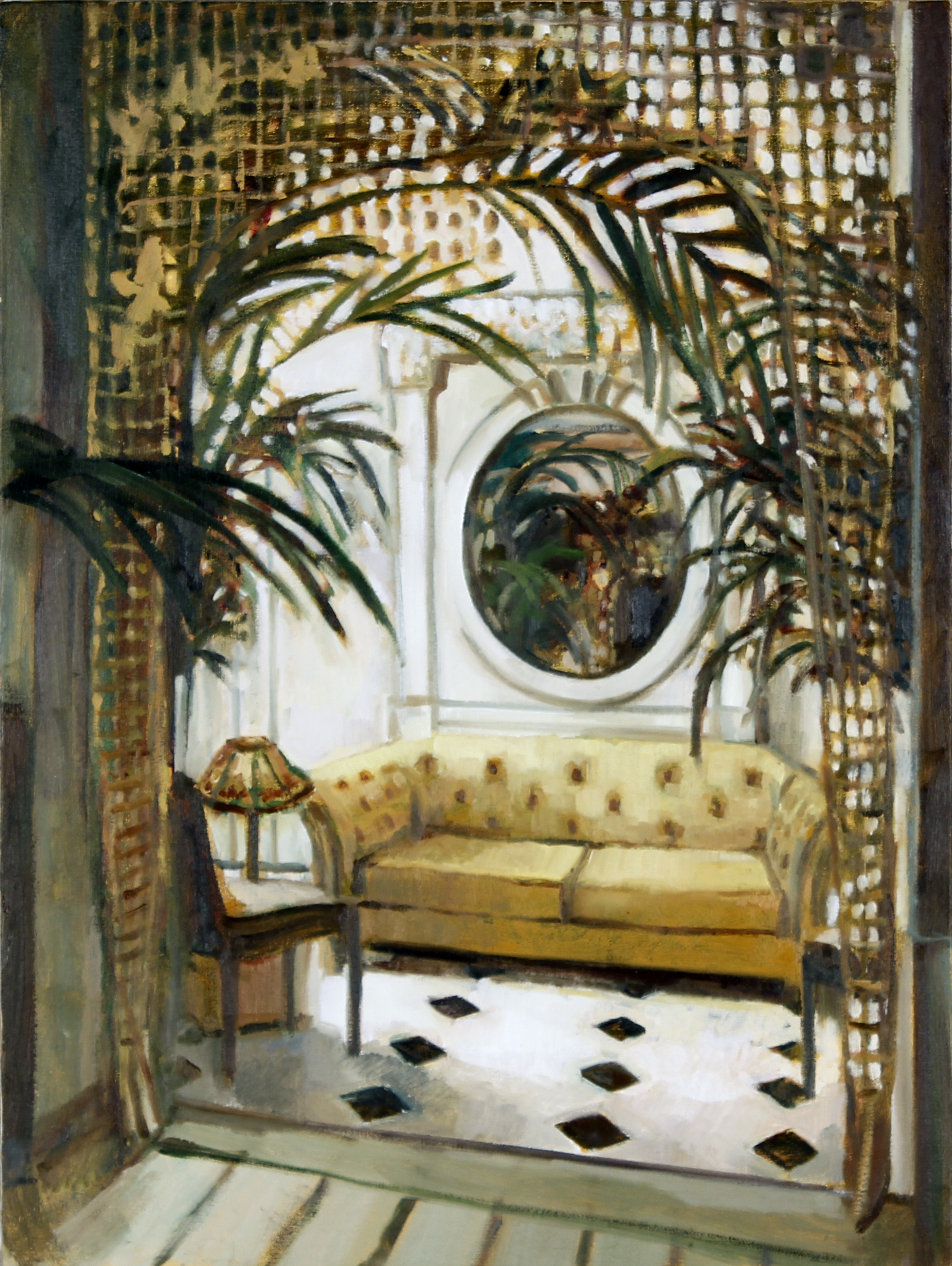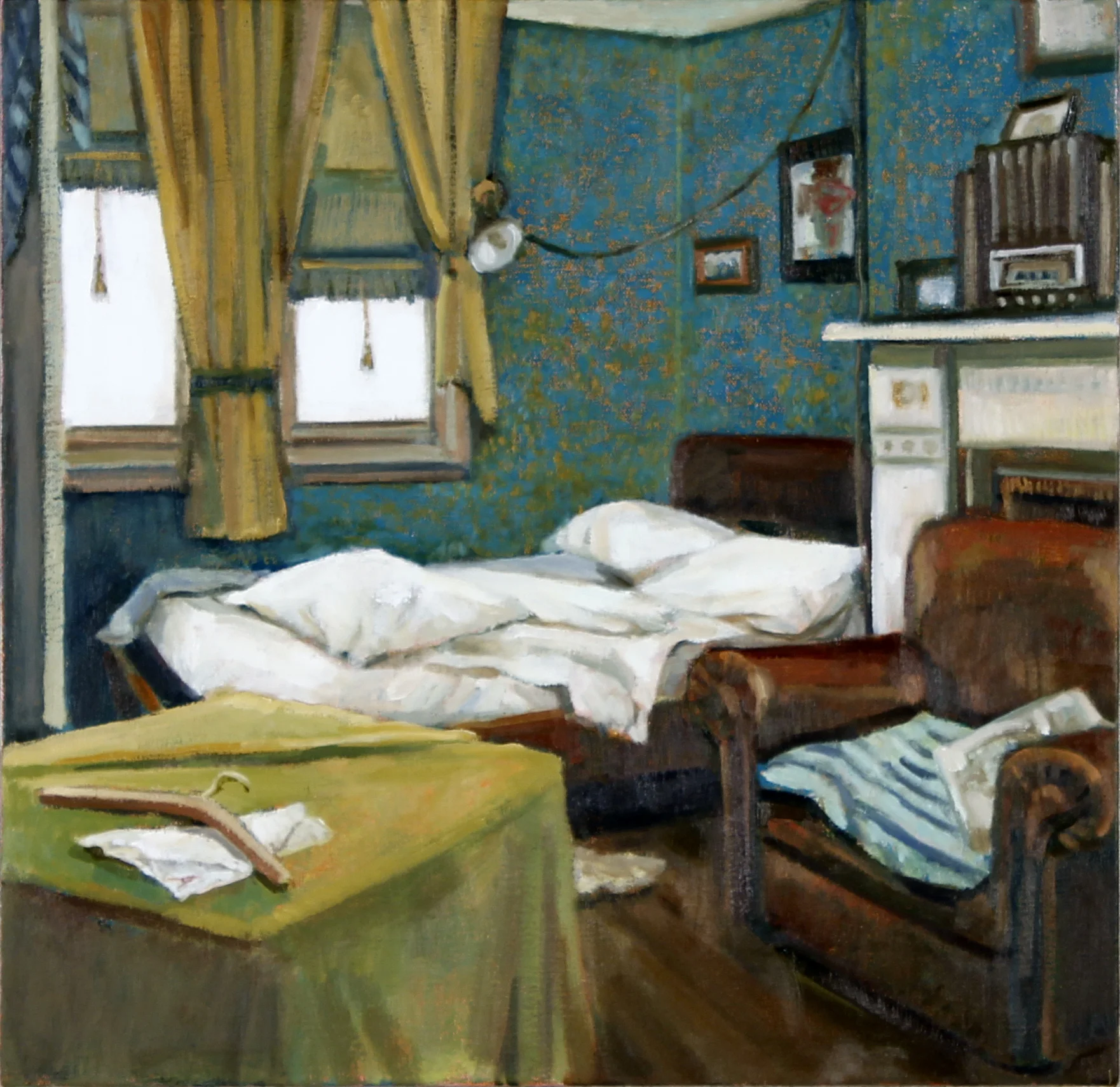June 30 - August 19, 2018
Opening Reception: July 5 7-9pm
Edmonton Artist Gillian Willans’ paintings of the domestic realm capture her interest in social role-playing and her own struggles to define her belonging. Her work deals with a wide range of conceptual ideas that are filtered through the lens of personal experience and grounded in the history and development of Genre Painting (art which represents scenes from everyday life). She utilizes and manipulates the tradition of realism to help create unease within her paintings. With a focus on creating mood through dramatic use of light and shadow, the private living rooms become a stage in which a range of social interactions have played or could play-out. Willans intends for the spaces to reflect the value ideals and gender roles of the people who should be present, not unlike 17th century Dutch Genre Painting that she openly references.
The work in The Well Tended Garden suggests the value systems of gender, family, privacy, intimacy, comfort and luxury. Domestic spaces of past and present encourage us to think about these values as they apply to our own daily lives. In The Poetics of Space, philosopher Gaston Bachelard writes,“A living creature fills an empty refuge, images inhabit, and all corners are haunted, if not inhabited”. The very geometry of a room is simultaneously full and empty.
This new body of paintings is a personal narrative for Willans, referencing the many roles she has played within the home (as girl, woman, girlfriend, wife, mother and artist) and pulling threads from history, art history, literary, and cinematic sources. She considers each of these paintings as scenes, not in one grand story but in similar stories that get renamed and reframed to the time in which they lived. Willans traces lines, looking for clues, trying to describe something that seems to elude resolution; as if it is so foreign that it can only be described by what it isn’t.
In Critique of Everyday Life philosopher Henri Lefebvre says that to properly see the truth we need to place our everyday stories, “at a reasonable, well-judged distance, like the objects we see before us. Then their many-sided strangeness becomes apparent: in relation to ourselves, but also within themselves and in relation to themselves. In this strangeness lies their truth, the truth of their alienation. It is then that consciousness of alienation – that strange awareness of the strange – liberates us, or begins to liberate us, from alienation.” (Lefebvre p. 20). At the heart of Willans’ research is a desire to utilize this “reasonable distance” both formally, in her choice of compositions and colour, and metaphorically drawing attention to our relationship to specific sociological symbols.
Can we find meaningful symbols in our every-day activities and in the spaces in which we reside? To consider this meaning is to realize that these painted spaces and the spaces we experience in our daily lives are not only rooms, they are metaphors.
Thank you to Scott Gallery for providing the artworks for this exhibition





